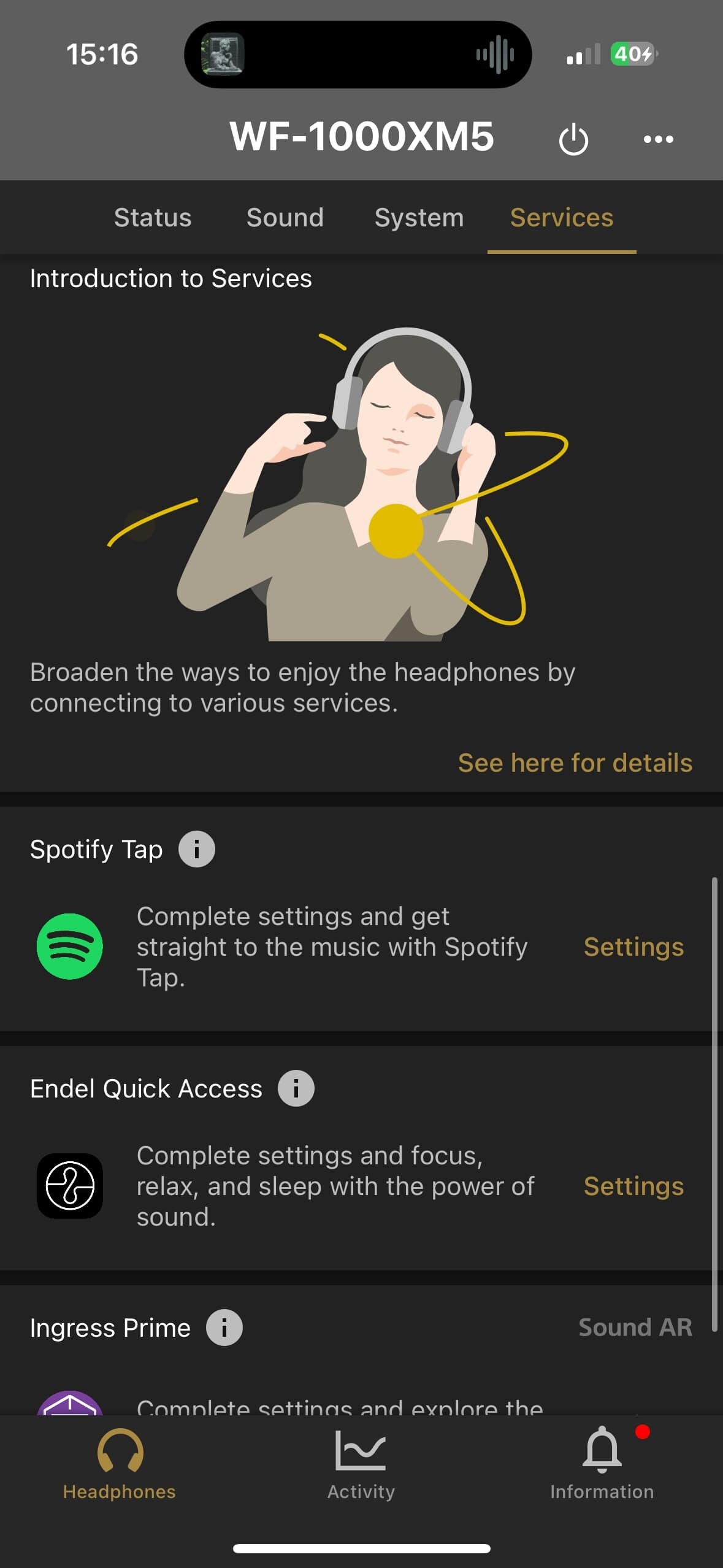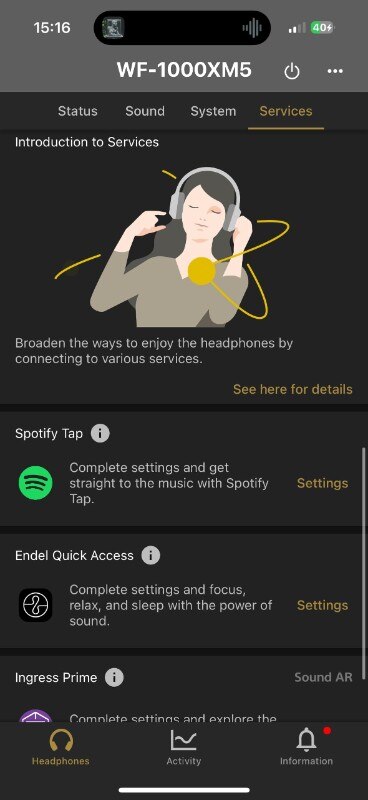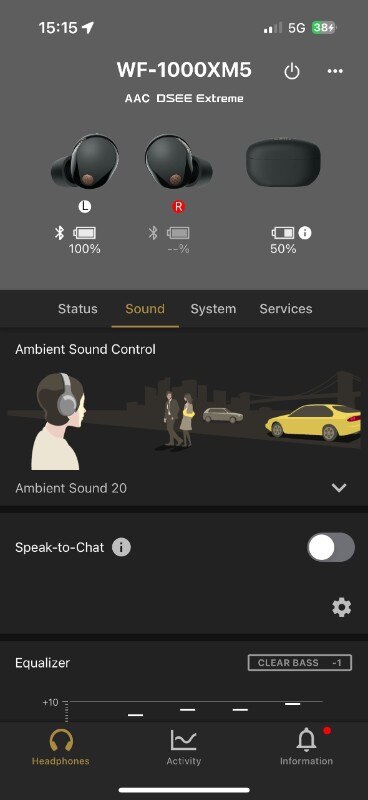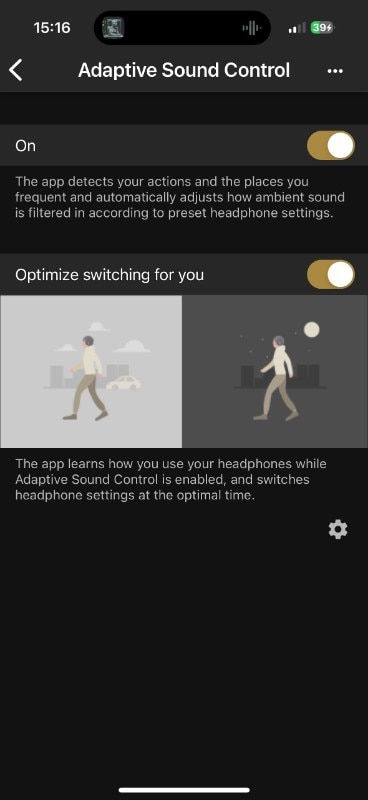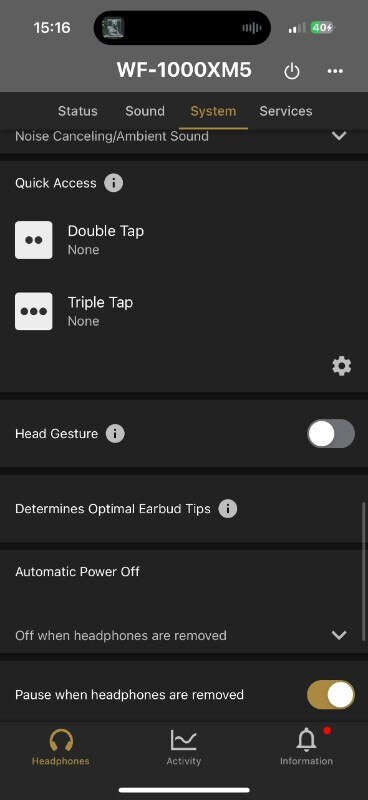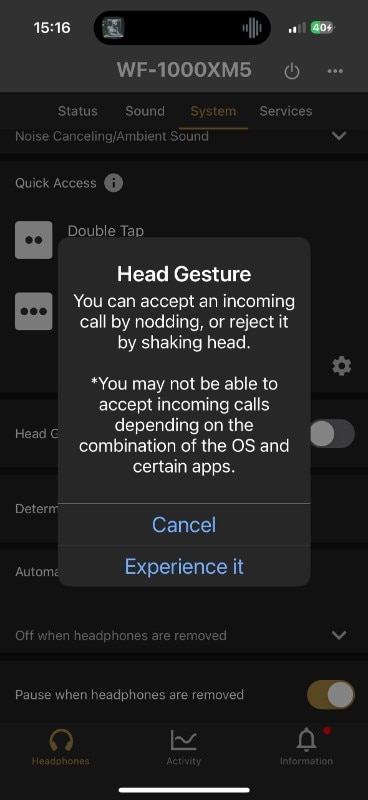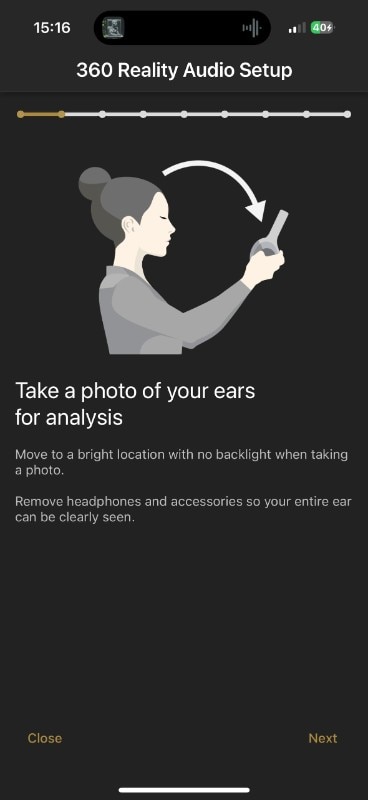Picture this: The latest version of Sony’s WF-1000X, now in its fifth iteration and third fully wireless edition, delivers unparalleled sound quality. It is hard to find anything better on the market today. Not only do these earphones excel at reproducing complex musical compositions with detailed and exciting cascading sounds, but they also bring a rare physicality to music – a quality often lost in this all-digital age of music consumption. Soundguys, the renowned review site, praises their exceptional quality and unique ability to “create a soundstage”.
Credit goes to Sony for striking the ideal balance between size and performance. The previous version of the earphones was still a little bulky, and some may have found the weight and fit tiring to wear for long periods of time. Now the box and the sleeves have found a perfectible but totally satisfying size. And that’s not all – the introduction of a physical pairing button on the case simplifies the process of connecting to new devices.

The WF-1000XM5s support the new Bluetooth 5.3 standard, along with popular standards like SBC and AAC, as well as the efficient LE and Sony’s high-quality LDAC format. Somehow, the real delights end there. Which is a good place to end. The Sony WF-1000XM5s are probably the best choice on the market if you listen to a lot of music of different genres. And maybe some podcasts.
Great for listening, but...
You could say that if we used earbuds for the same purpose as the Walkman headphones in the 1980s – listening to music (or maybe a podcast or movie soundtrack) – Sony’s flagship earbuds would be perfect.
But today’s earbuds are multifunctional tools that must seamlessly switch between various functions. They must respond to our need to constantly interact with technology.
We need earbuds not just to listen, but to talk. We use headsets to make calls and send voice messages. And despite an option in the app to improve voice output, it’s not uncommon for the voice captured by the WF-1000XM5s to be drowned out or fade into the background, especially when sending a short voice message or speaking fast.
The Audio Experience
But the main issue with using the WF-1000XM5 is the “transparency” feature, which allows you to break through the acoustic barrier of the earphones and listen to the outside world as if you weren’t wearing them. You can seamlessly switch from the electronic and stormy landscape of the last Aphex Twin track to a conversation with your seventy-year-old neighbor about the state of the condo elevator (which in itself reflects how we live in the twenties).
Apple’s AirPods Pro, which have an excellent but less exciting sound than Sony’s flagship models, excel in this scenario: their strength lies in their interaction with the external environment. A simple click on the stem and you’re immersed in your music (or you can use them to ward off external disturbances, as we’ve explained here). Another click and it’s as if they weren’t in your ears at all. After using them, your expectations of earphones will be changed forever.
Apple has put a solution on the table that is consistent with the philosophy of consumer technology today – a philosophy it has arguably defined more than any other: the device is there when you need it, but it’s not burdensome or cumbersome. It fades seamlessly into the background when not in use. It’s fluid, like everything in these days of constant adaptation and adaptability. It always empowers, never hinders.
Sony reduces the “transparency” experience on the WF to “quick attention”, which allows you to briefly interact with the outside world by holding down one of the earpieces with your finger. But the performance isn’t fantastic, and it’s objectively uncomfortable – imagine having to hold something in your hand and it feels too little, like you can only look out the window and not move freely in and out of the house.
Note: When pairing the earphones (latest firmware at time of review, 2.0.1) with an iPhone 15 Pro, we sometimes noticed that the audio would disconnect from one or both earphones for a few seconds. There were also a few too many pauses when switching between adaptive sound modes. These are issues we haven’t seen on previous models, and hopefully will be addressed in future software updates.



